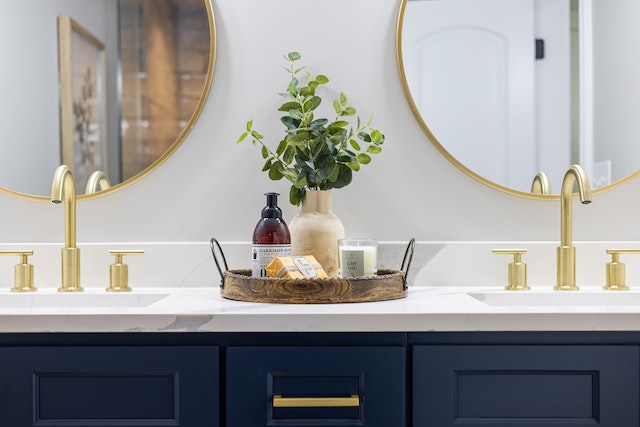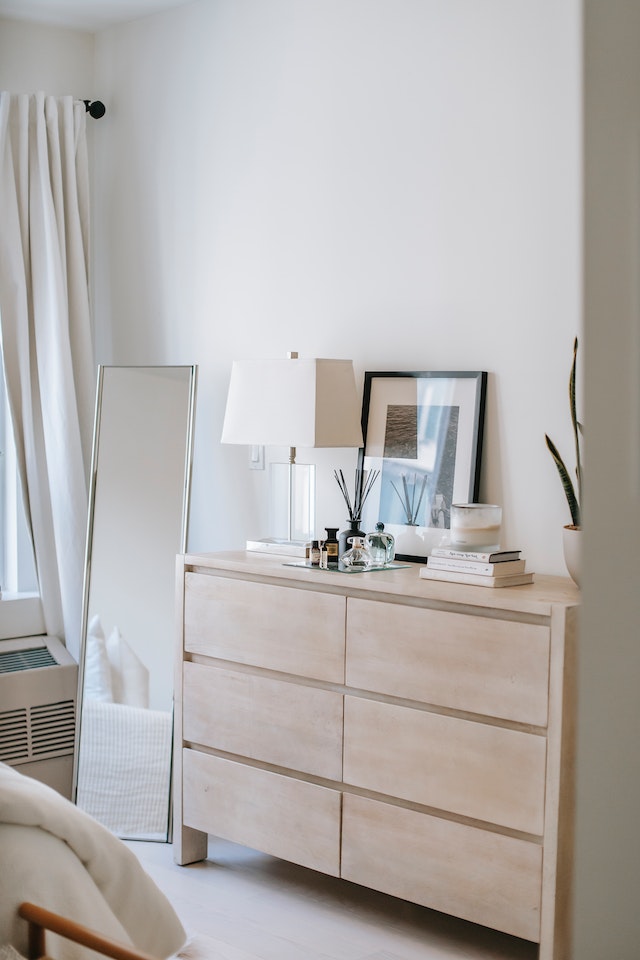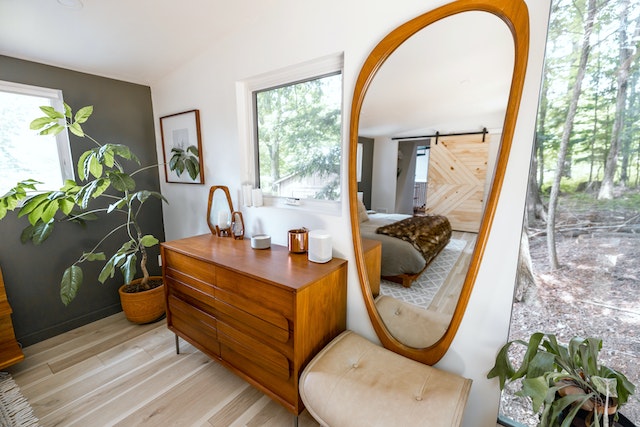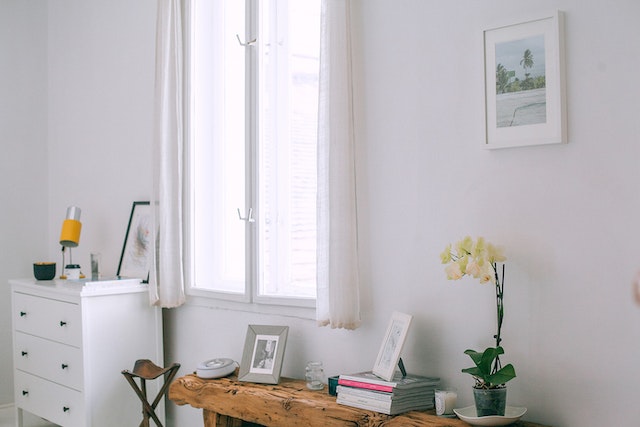
In interior design, the art of transforming small spaces into enchanting havens is a skill that is revered and cherished by creative minds. For those residing in compact dwellings where space comes at a premium, the challenge is not merely to accommodate daily essentials but to curate an environment that feels open, inviting, and grand, despite its spatial constraints. Read on as we unravel the secrets on how to make small rooms appear larger, as if touched by the mystical wand of a master illusionist.
The Need to Maximize Small Spaces
As our bustling cities continue to thrive and the demand for compact living spaces escalates, the importance of maximizing every square inch becomes increasingly eminent. More often than not, individuals find themselves in rooms where spatial constraints abound, leaving them yearning for the illusion of more room to breathe freely and luxuriate in their surroundings. The key lies not in acquiring a vast expanse but rather, in delving into the depths of visual wizardry, where the right techniques can deceive the eye and transport one into spacious realms of tranquility.
Why it Pays to Know Optical Illusions
Optical illusions have long captivated the human imagination, piquing curiosity and challenging perceptions. When applied skillfully to interior design, they possess the power to alter the dimensions of a space, bending our understanding of what is physically possible. Harnessing the magic of these illusions, one can create an illusionary landscape that defies the limitations imposed upon it. By understanding the principles behind these optical marvels, we can unlock a treasure trove of design possibilities that will transform even the most petite of rooms into perceptual palaces.
Playful Use of Mirrors
Mirrors have long been hailed as a design secret weapon, capable of transforming any room with their mesmerizing reflections. In the realm of small space design, they take on an even more significant role, offering an array of creative possibilities to expand perceived dimensions. By strategically placing mirrors, one can master the art of illusion and make small rooms appear larger than they actually are. Let us delve into some practical tips and inventive concepts that will allow you to harness the mirror’s enchanting powers.
The Mirror Wall Tapestry Trick:
Imagine stepping into a small room and being transported into a world of visual intrigue. Embrace the power of mirrors by using them to create a tapestry-like effect on one wall. Through this technique, you can give the illusion of additional rooms or openings, adding depth and complexity to the space. By reflecting light and drawing attention inward, the mirror wall tapestry trick makes the room feel more expansive and captivating.
The Infinity Mirror:
Delve into the realm of infinite possibilities with the infamous infinity mirror. This mind-boggling concept involves placing mirrors on opposing walls, resulting in an infinite reflection that seems to extend into eternity. As light bounces back and forth, it creates a mesmerizing optical illusion that stretches the boundaries of the room. Not only does it make the space feel larger, but it also adds a touch of whimsy and magic to the overall design.

Tips for Mirrors in Small Spaces:
- Experiment with different shapes and styles of mirrors to suit your aesthetic preferences. Oval, round, or arched mirrors can soften the edges of a room and add a unique touch of elegance.
- Position mirrors strategically to reflect natural light from windows or artificial light sources. This will maximize the brightness in the room and create a sense of openness.
- Consider placing a mirror opposite a favorite piece of artwork or a beautiful view to enhance the visual impact and make it seem as if the space extends beyond its physical limitations.
- Use mirrored furniture or accessories, such as mirrored trays or decorative mirrors, to further amplify the illusion of space and add a touch of glamour.
Harmonizing with Light
In the intricate dance between light and design, the interplay of illumination becomes a vital element in creating the illusion of space within small rooms. By utilizing the nuances of natural light and artificial lighting, one can orchestrate a symphony of radiance, drenching the environment with luminosity and transforming the experience of being in a confined space. Let us explore the techniques and concepts that will allow you to harmoniously blend light and design, ultimately expanding the perceived dimensions of your small room.
Natural Illumination
There is no light more enchanting and uplifting than the warm embrace of natural sunlight. Harnessing its transformative powers, one can create an environment filled with a sense of openness and tranquility. To invite the sun’s radiant glory into your small room, consider the following tips:
Sheer Curtains: Embrace the delicate beauty of sheer curtains. These ethereal fabrics allow sunlight to filter through while maintaining a sense of privacy. By opting for light-colored sheers, you enhance the brightness and overall allure of the room.
Mirrors as Light Reflectors: Place mirrors strategically across from windows or other sources of natural light. Mirrors act as reflectors, bouncing sunlight around the room and creating a delightful play of shadows and gleaming rays. This not only amplifies the feeling of spaciousness but also adds a touch of magical shimmer to the atmosphere.
Inventive Lighting Fixtures
When natural light fades into dusk, it is time to summon the creative powers of artificial illumination. By thoughtfully selecting lighting fixtures, one can draw the eye upward, create a sense of vertical expansion, and elevate the atmosphere of the room. Consider the following tips to bring forth the enchantment of inventive lighting:
Pendant Lights: Hang pendant lights from the ceiling to illuminate the room from above. Opt for fixtures with adjustable heights to allow for customization based on the ceiling height of your small room. By directing light downwards, you create an illusion of spaciousness, as well as add an elegant focal point to the design.
Floor Lamps: Strategically place floor lamps in corners or near furniture to bathe the space with gentle radiance. Select lamps with upward-facing shades to cast a soft glow on the ceiling, visually elongating the room and adding depth to its dimensions.
Dimmer Switches: Install dimmer switches to adjust the intensity of the lighting based on your mood or the time of day. By allowing for varying levels of brightness, you can create a dynamic and adaptable space that feels larger and more inviting.
Captivating Color Palette
Within the realm of small space design, color holds a magical power to manipulate perception and create the illusion of expansiveness. By thoughtfully selecting and strategically applying shades, one can transform the walls and surroundings into portals that transport the beholder into vast landscapes. Let us delve into the intricacies of color psychology and explore practical tips to create a captivating color palette that will expand the perceived dimensions of your small room.
The Art of Monochrome
In the pursuit of creating a sense of continuity and simplicity, monochromatic color schemes reign supreme. By utilizing different tones and shades of a single color, one can dissolve visual barriers and stretch the boundaries of space. The result is a harmonious and streamlined environment that imparts a sense of vastness.
Practical tips for employing a monochromatic color scheme:
Choose a base color: Select a hue that resonates with your desired aesthetic. From tranquil blues to soothing greens, explore the vast spectrum of colors and find one that speaks to you.
Explore different shades: Experiment with various shades and tints of your chosen color. Lighter shades can create an airy and spacious ambiance, while darker tones add depth and richness.
Play with texture and pattern: Introduce subtle variations in texture and pattern to add visual interest and prevent the space from feeling monotonous. Consider incorporating textured wallpaper, patterned rugs, or textured fabrics in similar tones to create dimension.

Cool Tones and Pastels
Cool hues, such as serene blues and gentle pastels, have a remarkable ability to evoke a sense of tranquility while also giving the illusion of greater depth. When applied to small spaces, these colors create an airy and open atmosphere that transports the observer into serene realms of calmness.
Practical tips for incorporating cool tones and pastels:
Select blue and green tones: Blues and greens, especially those with cooler undertones, are inherently calming and create a sense of depth. Consider pastel shades of seafoam green, sky blue, or lavender to infuse the space with a serene vibe.
Balance with neutrals: Incorporate neutral tones, such as light grays, creams, or whites, to balance the cool color palette and prevent it from feeling overwhelming. Neutrals act as a soothing backdrop that allows the cool tones to shine.
Opt for light-colored furniture: Choose furniture pieces in light colors to maintain a cohesive and open feel. Light-colored furniture visually recedes into the background, making the room appear more spacious.
When it comes to color, the possibilities are endless, and the choices deeply personal. Explore the wide range of hues, experiment with different combinations and shades, and allow your intuition to guide you on the path of creating a captivating color palette that will make your small room feel like a sanctuary of grandeur.
Additional Tips for Maximizing Small Spaces:

Furniture Placement: Optimize the layout of your furniture to create a sense of flow and make small rooms appear larger. Consider using multi-functional furniture pieces, such as storage ottomans or nesting tables, to save space while providing added functionality.
Wall-mounted Storage: Take advantage of vertical wall space by installing shelves, hooks, or floating cabinets. These storage solutions keep the floor clear, giving the illusion of a larger space while providing ample storage for books, decor, or everyday essentials.
Clear the Clutter: Keep surfaces clutter-free by adopting a minimalist approach to decor. Choose a few meaningful pieces as focal points, and declutter regularly to maintain a clean and organized environment.
Utilize Vertical Space: Extend storage options to the ceiling by adding tall bookshelves or cabinets. This draws the eye upward and creates an illusion of height, making the room feel more spacious.
Consider Transparent and Lucite Furniture: Opt for transparent or Lucite furniture pieces, such as acrylic chairs or tables. These see-through items seamlessly blend into the background, helping make small rooms appear larger.
Use Illusionary Flooring: Choose flooring options that create an illusion of space. Opt for light-colored hardwood or laminate flooring with long, uninterrupted planks, as this elongates the room and adds a feeling of openness.
Strategic Placement of Artwork: Hang artwork at eye level to draw attention upward and create a sense of vertical expansion. Choose smaller pieces or a gallery wall arrangement to avoid overwhelming the space.
Keep Window Treatments Simple: Opt for minimalistic window treatments, such as sheer curtains or blinds, to maximize natural light and maintain an unobstructed view. Avoid heavy drapes or bulky window coverings that can make a room feel cramped.

Incorporate Reflective Surfaces: Introduce reflective surfaces, such as mirrored furniture, metallic accents, or glass tabletops, to bounce light and create the illusion of a larger space.
Bring the Outdoors In: Use indoor plants to add a touch of greenery and create a connection with nature. Plants not only improve air quality but also add a sense of freshness and openness to the room.
Embrace Open Shelving: Replace closed cabinets in the kitchen or living area with open shelves. This helps make small rooms appear larger by showcasing attractive dishes or decor while adding a sense of sophistication.
Create Visual Continuity: Maintain a cohesive color palette and design style throughout the room. This creates a seamless flow and avoids visual distractions that can make a small space feel crowded.
With the right techniques and a touch of creativity, it is possible to make small rooms appear larger. By incorporating optical illusions, harnessing the power of light, carefully selecting colors, and implementing smart storage solutions, you can transform your small space into a remarkable sanctuary that defies its physical limitations. So, embrace the challenge, let your imagination soar, and unlock the hidden potential of your intimate abode.
